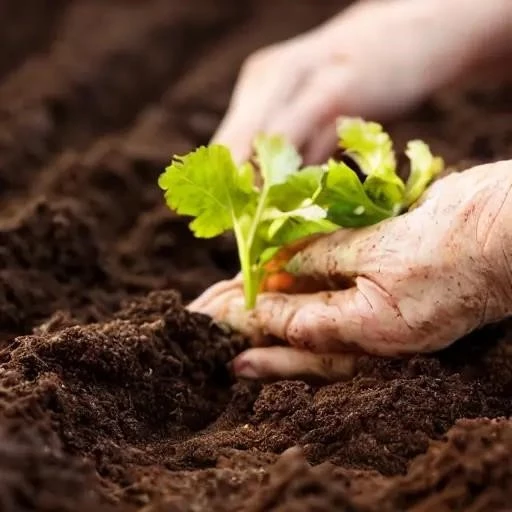Today is 10/04/2025 06:45:18 ()
In an increasingly unpredictable world, where climate shifts, economic uncertainties, and supply chain disruptions loom large, the age-old practice of gardening is experiencing a profound renaissance. Far from a mere hobby, it’s evolving into a critical life skill, a proactive measure for self-sufficiency, and a vibrant declaration of independence. As widespread hosepipe bans become common across regions, forcing gardeners to make tough choices about precious water, the quest for sustainable and resilient food sources has never been more urgent. This isn’t just about growing a few tomatoes; it’s about mastering the art of survival gardening, transforming your outdoor — or even indoor — space into a thriving, self-sustaining oasis that promises food security and peace of mind for years to come.
The imperative to cultivate our own sustenance is undeniably growing, fueled by a collective awakening to our reliance on external systems. From urban dwellers maximizing balcony potential with ingenious container setups to rural homesteaders expanding their plots with robust, drought-resistant varieties, a powerful movement is taking root. This forward-thinking approach, deeply rooted in ecological wisdom and innovative techniques, empowers individuals and communities alike to face future challenges with confidence. By integrating insights from permaculture principles, cutting-edge hydroponics, and time-tested agricultural knowledge, modern survival gardening transcends traditional methods, offering a dynamic pathway to unparalleled food resilience, ensuring that every harvest is a testament to preparedness and ingenuity.
Essential Pillars of Survival Gardening
| Pillar | Description | Key Action/Benefit |
|---|---|---|
| Strategic Crop Selection | Choosing plants optimized for yield, nutrition, and environmental resilience in challenging conditions. | Focus on high-calorie, nutrient-dense staples like potatoes, beans, squash, and root vegetables; prioritize heirloom varieties for seed saving. |
| Efficient Water Management | Implementing systems to conserve, collect, and judiciously utilize every precious drop of water. | Install rainwater harvesting systems, utilize drip irrigation, apply thick layers of mulch to retain soil moisture, and select drought-tolerant plants. |
| Optimized Soil Health | Building and maintaining fertile, living soil that supports sustained plant growth and minimizes external inputs. | Practice composting, incorporate cover crops, employ no-till methods, and enrich soil with organic matter to foster a robust microbiome. |
| Space Maximization & Vertical Farming | Ingeniously transforming limited or unconventional spaces into highly productive growing areas. | Embrace container gardening, construct vertical gardens for urban environments, and implement succession planting to ensure continuous harvests. |
| Seasonal & Year-Round Planning | Developing a comprehensive planting and harvesting schedule that accounts for local climate and extends the growing season. | Plan for seasonal rotations, protect delicate plants from winter dehydration, and utilize cold frames or greenhouses for year-round production. |
| Knowledge & Community Building | Continuously learning, adapting to new challenges, and sharing insights within a supportive network. | Research local climate data, consult expert resources like Epic Gardening, connect with local gardening groups, and practice seed saving. |
Reference: Epic Gardening
One of the foundational tenets of a successful survival garden is meticulous plant selection. As Melissa Strauss from Epic Gardening wisely advises, identifying the “14 Survival Garden Crops You Should Plant in August” or exploring “10 plants to grow in hard times” becomes paramount. These aren’t just any plants; they are the stalwarts — resilient, nutrient-rich, and often high-yielding varieties designed to thrive even when conditions are less than ideal. Consider the humble potato, an incredibly versatile and calorically dense crop, or the diverse family of beans, providing essential protein and nitrogen for your soil. Prioritizing heirloom seeds is also a remarkably effective strategy, ensuring genetic diversity and the ability to save seeds year after year, building true generational food security.
Furthermore, given the increasing frequency of water restrictions, mastering efficient water management is no longer optional; it’s absolutely essential. Imagine a garden thriving even amidst prolonged dry spells, a testament to intelligent design and conscientious resource use. Rainwater harvesting systems, from simple barrels to integrated cisterns, can capture invaluable precipitation, significantly reducing reliance on municipal supplies. Coupled with precision drip irrigation, which delivers water directly to the plant roots, and a generous application of mulch, your garden can become a bastion of hydration efficiency. Mulching, in particular, acts as a natural blanket, suppressing weeds while dramatically minimizing evaporation, thereby preserving critical soil moisture during scorching summer months.
For those with limited acreage, the innovative techniques of container gardening and vertical farming offer transformative possibilities. As highlighted by the “Gardening in Containers” community, virtually any vessel can become a productive growing space, from repurposed buckets to elegant raised beds. Vertical gardens, extending upwards rather than outwards, are particularly revolutionary for urban environments, allowing a bounty of greens and herbs to flourish on walls or balconies. This ingenious approach maximizes sunlight exposure and airflow, providing a compelling solution for compact living. By embracing these space-optimizing methods, anyone can cultivate a thriving food source, regardless of their plot size, turning even the smallest patio into a vibrant, food-producing landscape.
Ultimately, the journey into survival gardening is a profoundly empowering one, a proactive step towards a more secure and sustainable future. It’s an ongoing process of learning, adapting, and connecting with the very essence of life itself. By integrating expert insights, embracing innovative techniques like vertical farming and strategic crop selection, and diligently planning for every season, you are not merely growing food; you are cultivating resilience, nurturing independence, and building a brighter, greener tomorrow for yourself and your loved ones. The future, undoubtedly, belongs to those who are prepared to grow it.






